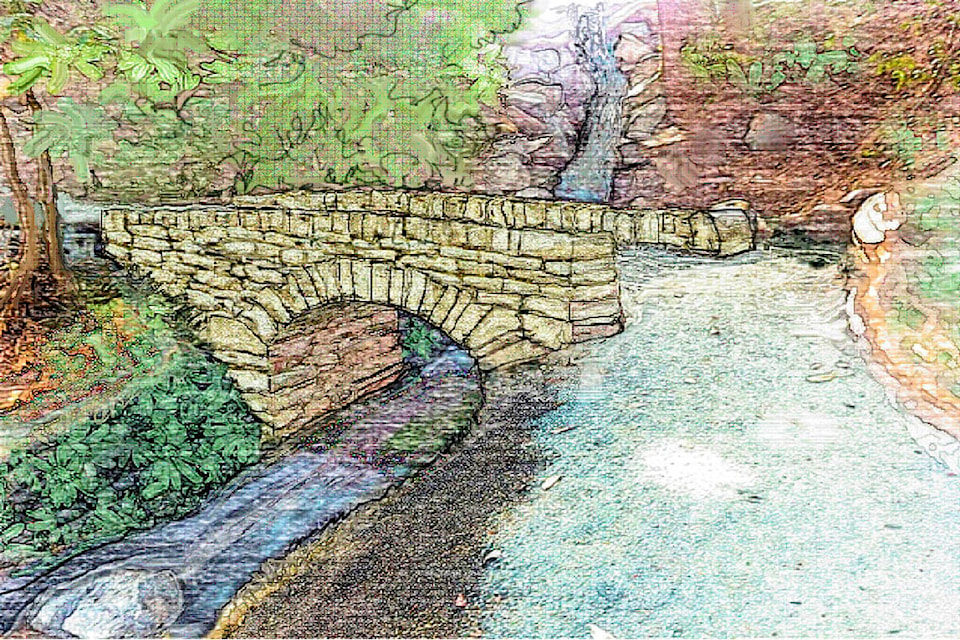North Saanich’s 12-acre Dominion Brook Park will soon feature what may well be the first dry stone bridge west of Ontario.
The project is being funded by the Friends of Dominion Brook Park Society and the actual construction will take place during the first week of September. The actual construction of the bridge will be carried out by Dry Stone Walling Across Canada (DSWAC), who will hold simultaneously hold an eight-day seminar for stone masons wanting to learn about building structures of this kind.
The workshop takes place from September 1 to 8, and the public is invited to come to Dominion Brook Park and watch these skilled craftsmen at work.
A grand opening of the bridge is planned for Sept. 8 at 2 p.m.
Dry stone construction, also known as dry-stack is a building method by which structures are constructed from stones without any mortar to bind them together. The structures are stable because of their unique construction method, which is characterized by the presence of a load-bearing façade of carefully selected interlocking stones.
The method has been used for millennia and dry-stone wall constructions in north-west Europe have been dated back to the Neolithic Age. Some Cornish hedges are believed by the Guild of Cornish Hedgers to date from 5000 BC. No mortar holds the stones together, only gravity and friction and it’s the skill of the stone mason that’s an essential ingredient in the success of the structure.
“It’s an interesting process where you start with a wooden form–sort of a wooden semi-circle–that goes across your crossing point,” said Ian Cameron, one of the Society’s Board Members.
“Then you fill that form with large stones that are shaped to form an arch and remove the wooden form. Think of it as a sort of igloo construction, but with shaped stone instead of snow. It’s a real art form and the method has been around for thousands of years.”
Using this technique, the Society plans to build a traditional style Scottish pack-horse footbridge to span the brook. The bridge will be five metres long and just over a meter wide and have a 2.3-metre span that will cross the recently renovated Rhododendron Ravine.
Locally quarried granite and field stone will be used as the construction material.
Dominion Brook Park was first created by the Canadian Department of Agriculture in 1912, as a demonstration arboretum and ornamental garden for public use.
“They (the federal government) brought in trees and plants of all kinds from all over the world, mostly in an effort to learn what plants would survive and thrive in this area,” explained Cameron.
“Then, in 1980, they decided that they didn’t have the money to maintain it, and just sort of abandoned it. The place became overgrown and in about 1990 a group of area residents decided to do something about it and the Society was created.”
The park, while still owned by the federal government, is now the responsibility of North Saanich and is maintained by the Society.
“Volunteers get together every Wednesday morning to clear the underbrush, do some pruning and weeding…it’s a real community effort. This bridge will be another amazing addition to the park and we’re very excited about the project,” said Cameron.
“This bridge will be totally in-keeping with the other defining features in the Park, including the stone walls, stairways and a bridge...and be a great addition to the park.”
What may well be the first dry stone bridge west of Ontario, will be built during the first week of September at Dominion Brook Park in North Saanich.
